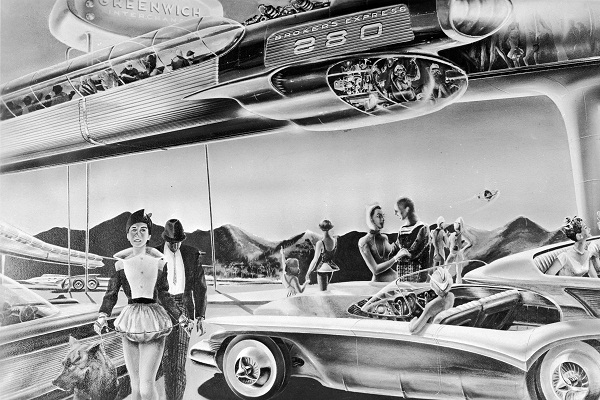This review will not be kind. But let’s not start that way. Ground lies between. Rewind.
Am I the only person to find being addressed like this intensely irritating? China Mieville’s new book Railsea is full of it.
Some books are so wrought with references, intertext, allusion that can only manifest itself through repeated syntactical anomalies, that they earn themselves glowing reviews for being incomparable, perhaps perverse. Many will read Railsea and wax lyrical about it; to do otherwise could suggest that the cleverness of it all has simply washed right over. This is a risk I am willing to take.
Railsea, I am informed, is a work of Weird Fiction. The story peters out in all directions; not a lot actually happens. Its fairly plot-less narrative is concerned with futuristic train travel. The passengers of a vessel called Medes enjoy hunting giant moles, called moldywarpes. The protagonist, a young man called Sham Yes ap Sorrap, Sham for short, doesn’t get as much enjoyment from the pursuit as the others. Throughout he is soul-searching. It’s a bumpy ride, like the Medes’. Mieville’s writing is correspondingly fractured.
From the outset one appreciates that Mieville must have a very brave editor. The grammar throughout is intentionally awry. Quite strikingly, the author adopts the ampersand (&) rather than ‘and’, even at the beginning of sentences. But he knows his semiotics; that in the early twentieth century, Ferdinand de Saussure broke language up into signs, and a sign into a signifier (sound or image) and a signified (the meaning), and that normally the two have little logical relationship. Mieville likes to subvert that. About halfway through his novel he reveals that, in the age of his tale, ‘&’ has become the status quo, a perfect embodiment of the twisted course adopted by a Railsea train.
Conceited efforts like this crop up throughout to make the writing and its quirks seem effortless, but offer the hint that they contain within themselves some meaningful, hidden depth. Mieville gives the impression of having written a literary criticism or commentary of his own book before putting pen to paper. The book is curiously inverted like that.
Equally grating is the impression that the author is at once eager to breach all boundaries of classification through his post, post-modernist genre bending, and simultaneously to create for himself some place among a revered literary canon. Hats off to him for having the self-confidence to include among his acknowledgments a debt to the illustrious likes of Penelope Lively, Daniel Defoe, and Robert Louis Stevenson. Mieville would probably agree that labels often obfuscate more than clarify. ‘Legacy-hunting’ is at least neutral in those respects.






Comments